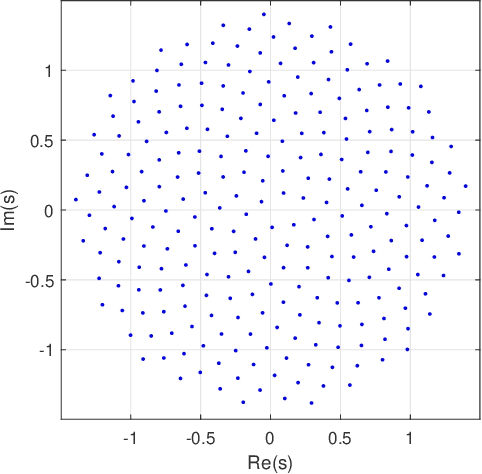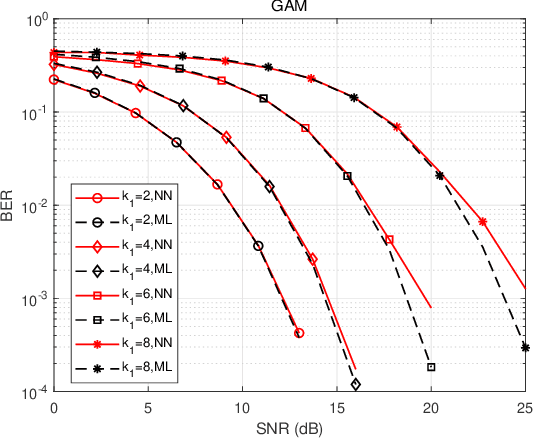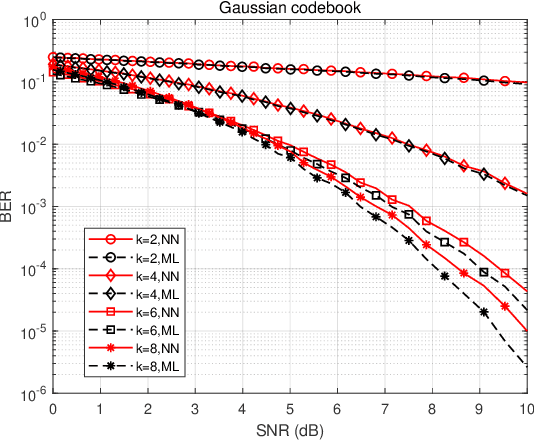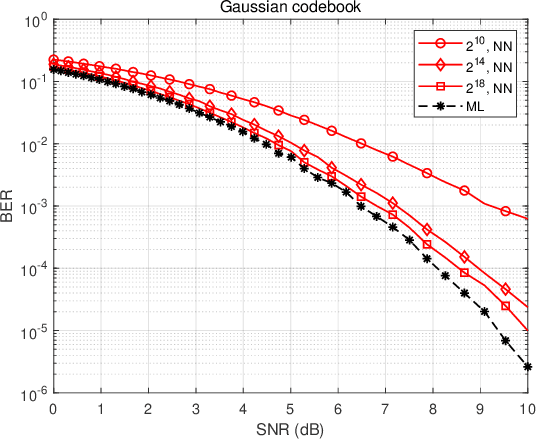Boxiang He
Specific multi-emitter identification via multi-label learning
Sep 26, 2025Abstract:Specific emitter identification leverages hardware-induced impairments to uniquely determine a specific transmitter. However, existing approaches fail to address scenarios where signals from multiple emitters overlap. In this paper, we propose a specific multi-emitter identification (SMEI) method via multi-label learning to determine multiple transmitters. Specifically, the multi-emitter fingerprint extractor is designed to mitigate the mutual interference among overlapping signals. Then, the multi-emitter decision maker is proposed to assign the all emitter identification using the previous extracted fingerprint. Experimental results demonstrate that, compared with baseline approach, the proposed SMEI scheme achieves comparable identification accuracy under various overlapping conditions, while operating at significantly lower complexity. The significance of this paper is to identify multiple emitters from overlapped signal with a low complexity.
Rethinking: Deep-learning-based Demodulation and Decoding
Jun 13, 2022



Abstract:In this paper, we focus on the demodulation/decoding of the complex modulations/codes that approach the Shannon capacity. Theoretically, the maximum likelihood (ML) algorithm can achieve the optimal error performance whereas it has $\mathcal{O}(2^k)$ demodulation/decoding complexity with $k$ denoting the number of information bits. Recent progress in deep learning provides a new direction to tackle the demodulation and the decoding. The purpose of this paper is to analyze the feasibility of the neural network to demodulate/decode the complex modulations/codes close to the Shannon capacity and characterize the error performance and the complexity of the neural network. Regarding the neural network demodulator, we use the golden angle modulation (GAM), a promising modulation format that can offer the Shannon capacity approaching performance, to evaluate the demodulator. It is observed that the neural network demodulator can get a close performance to the ML-based method while it suffers from the lower complexity order in the low-order GAM. Regarding the neural network decoder, we use the Gaussian codebook, achieving the Shannon capacity, to evaluate the decoder. We also observe that the neural network decoder achieves the error performance close to the ML decoder with a much lower complexity order in the small Gaussian codebook. Limited by the current training resources, we cannot evaluate the performance of the high-order modulation and the long codeword. But, based on the results of the low-order GAM and the small Gaussian codebook, we boldly give our conjecture: the neural network demodulator/decoder is a strong candidate approach for demodulating/decoding the complex modulations/codes close to the Shannon capacity owing to the error performance of the near-ML algorithm and the lower complexity.
 Add to Chrome
Add to Chrome Add to Firefox
Add to Firefox Add to Edge
Add to Edge